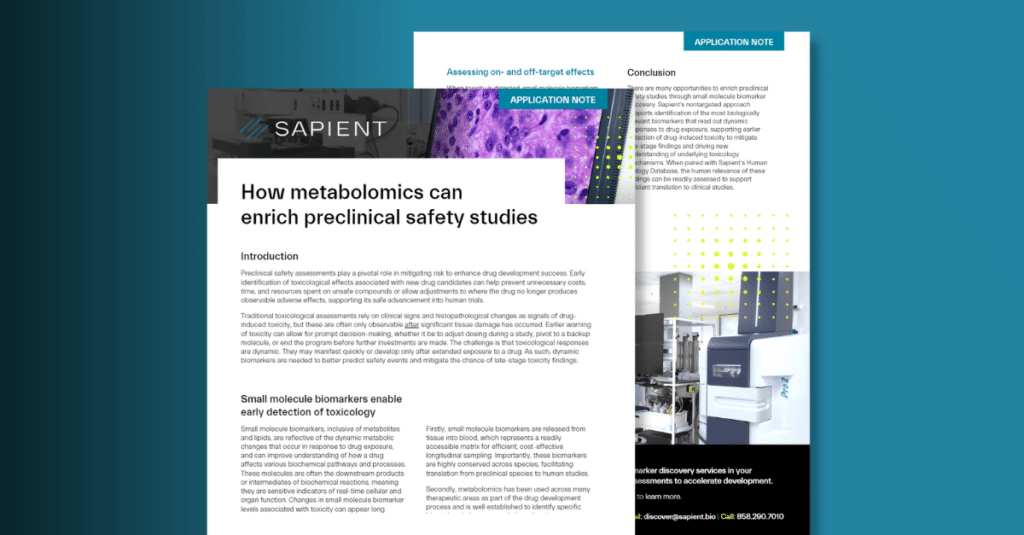Application Note | July 3, 2023
How metabolomics can enrich preclinical safety studies
Get the Resource
Application Note - Toxicology - Download
"*" indicates required fields
Preclinical safety assessments play a pivotal role in mitigating risk to enhance drug development success. Early identification of toxicological effects associated with new drug candidates can help prevent unnecessary costs, time, and resources spent on unsafe compounds or allow adjustments to where the drug no longer produces observable adverse effects, supporting its safe advancement into human trials.
Traditional toxicological assessments rely on clinical signs and histopathological changes as signals of drug-induced toxicity, but these are often only observable after significant tissue damage has occurred. Earlier warning of toxicity can allow for prompt decision-making, whether it be to adjust dosing during a study, pivot to a backup molecule, or end the program before further investments are made. The challenge is that toxicological responses are dynamic. They may manifest quickly or develop only after extended exposure to a drug. As such, dynamic biomarkers are needed to better predict safety events and mitigate the chance of late-stage toxicity findings.

Use the form to download the Application Note to learn how small molecule biomarker discovery can bring new layers of insight to preclinical safety studies, from identifying early biomarkers of drug-induced toxicity to elucidating mechanisms of toxicology and on- and off-target effects, and improving translation to human studies.
Get the Resource
Application Note - Toxicology - Download
"*" indicates required fields